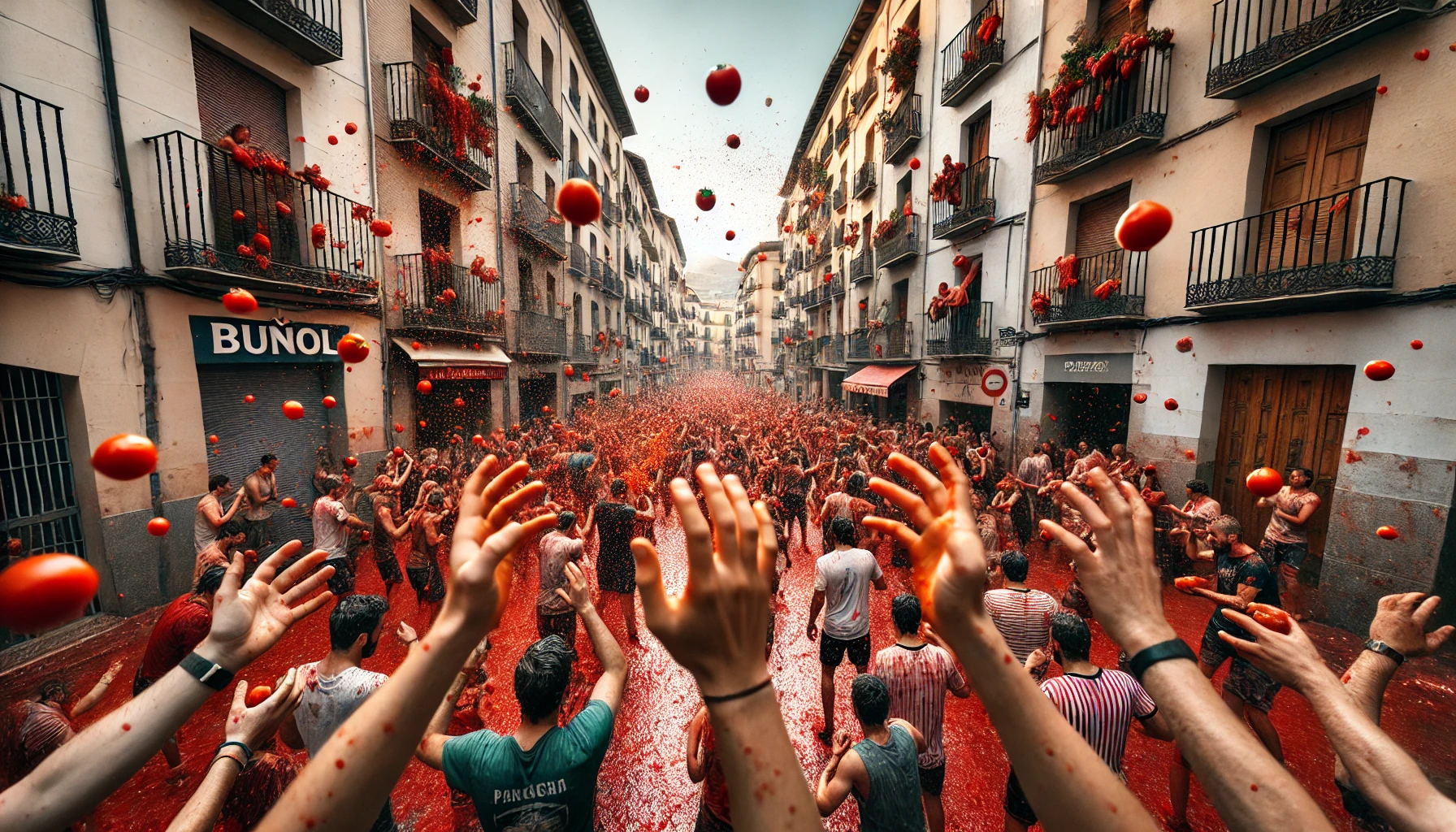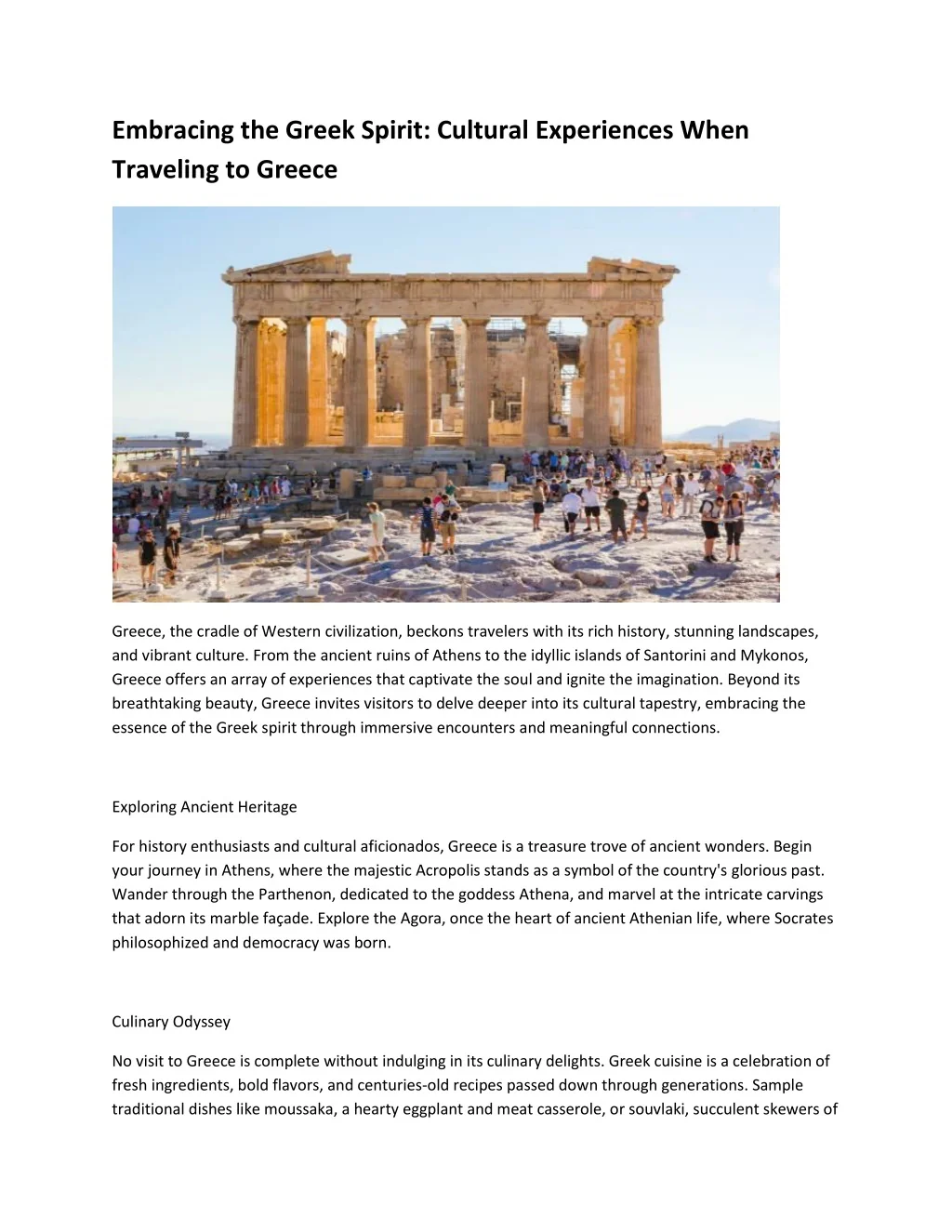
Spain, a land steeped in history, passion, and vibrant culture, offers an unparalleled journey for any traveler. If you’re seeking to truly immerse yourself in the heart of this captivating country, discovering the traditions to explore in Spain for a memorable experience is paramount. From ancient rituals to lively modern festivals, Spanish customs are a testament to its rich past and enduring spirit, promising an adventure that transcends mere sightseeing.
Discovering Spain’s Rich Cultural Tapestry Through Its Traditions
Spain’s cultural fabric is intricately woven with customs that have been passed down through generations. These traditions are not just historical relics; they are living, breathing expressions of community, faith, and joy. Engaging with them provides a unique window into the Spanish way of life, offering a deeper connection than any tourist trap ever could.
The Heartbeat of Spain: Unpacking Its Enduring Customs
Understanding these enduring customs means delving into the local rhythm. Spain’s traditions are deeply rooted in regional identities, each area boasting its own unique flair. From the fiery flamenco of Andalusia to the communal sardana dance of Catalonia, these practices shape daily life and define the Spanish spirit. They invite participation, storytelling, and an authentic understanding of the country’s diverse heritage.
Immersive Festivals and Fiestas: Spain’s Vibrant Celebrations
No discussion of Spanish traditions is complete without highlighting its spectacular festivals and fiestas. These events are explosions of color, music, and collective enthusiasm, drawing millions of participants and spectators annually. They are prime examples of the deep-seated joy and communal spirit that characterize Spanish culture.
La Tomatina: A Unique Food Fight Experience in Buñol
Imagine a town transforming into a sea of red, with thousands of people joyfully pelting each other with ripe tomatoes. This is La Tomatina, held annually in Buñol, Valencia, on the last Wednesday of August. It’s an utterly unique and exhilarating tradition, attracting visitors from around the globe for an hour of pure, unadulterated fun. While it might seem chaotic, it’s a well-organized event that embodies a playful side of Spanish culture.
Tips for La Tomatina:
- Wear old clothes and goggles.
- Crush tomatoes before throwing them to avoid injury.
- Book accommodations and tickets well in advance, as space is limited.
Semana Santa: Holy Week’s Profound Reverence Across Spain
Semana Santa, or Holy Week, is arguably Spain’s most solemn and deeply moving tradition. Celebrated in the week leading up to Easter, particularly renowned in Andalusia (Seville, Málaga), this religious festival features elaborate processions. Penitents in distinctive robes and pointed hoods carry immense floats (pasos) depicting biblical scenes, accompanied by haunting music and fervent onlookers. It’s a powerful display of faith, art, and community, offering a profoundly emotional experience.
Feria de Abril: Seville’s Andalusian Extravaganza
Just two weeks after the solemnity of Semana Santa, Seville erupts into the dazzling Feria de Abril. This week-long fair is a kaleidoscope of flamenco dresses, horse-drawn carriages, and lively music. Sevillians gather in private tents (casetas) to eat, drink, dance sevillanas, and socialize late into the night. It’s a quintessential Andalusian tradition, showcasing the region’s passion for festivity, fashion, and social elegance.
San Fermín (Running of the Bulls): Pamplona’s Adrenaline-Pumping Tradition
Held every July in Pamplona, Navarra, the San Fermín festival is famous worldwide for its "Running of the Bulls" (encierro). While controversial, it’s a deeply ingrained tradition that dates back centuries, rooted in the transport of bulls to the bullring. Beyond the encierro, San Fermín is a nine-day celebration filled with parades, concerts, fireworks, and non-stop revelry, embodying the lively spirit of northern Spain. Spectators can safely watch from balconies, witnessing a unique cultural spectacle.
Culinary Journeys: Savoring Spain’s Gastronomic Traditions
Spanish culture is inextricably linked to its food and drink. Exploring Spain’s gastronomic traditions is a journey for the senses, revealing the country’s diverse landscapes and regional specialties. Food isn’t just sustenance; it’s a social glue, a reason for gathering, and a source of immense pride.
The Ritual of Tapas: A Social Dining Custom to Embrace
The tapas tradition is perhaps Spain’s most famous culinary contribution. More than just small dishes, tapas represent a way of life – a social ritual of hopping from bar to bar, sharing plates, and enjoying lively conversation. From patatas bravas to jamón serrano, each region offers its own unique selection. Embracing "tapeo" allows you to sample a variety of flavors while experiencing the vibrant Spanish social scene firsthand.
Practical Advice for Tapas:
- Order one or two tapas per person at each bar.
- Don’t be afraid to stand at the bar; it’s a common practice.
- Try local specialties; ask for recommendations.
Paella Perfection: A Beloved Spanish Culinary Heritage
Originating in Valencia, paella is more than just a rice dish; it’s a culinary icon. Traditionally cooked outdoors over an open fire, authentic paella valenciana features chicken, rabbit, and green beans. However, countless variations exist, including seafood paella and mixed paella. Sharing a large pan of paella with family and friends on a Sunday afternoon is a cherished Spanish tradition, symbolizing togetherness and celebration.
Wine Regions and Tasting Experiences: Spain’s Liquid Gold Traditions
Spain boasts some of the world’s oldest and most respected wine regions, from the robust reds of Rioja to the crisp whites of Rías Baixas and the unique sherries of Andalusia. Embarking on a wine tasting tour is a fantastic way to explore the country’s "liquid gold" traditions. Many bodegas (wineries) offer tours that explain the winemaking process, share the history of their vineyards, and conclude with tastings that pair local wines with regional cheeses and cured meats.
Art, Music, and Dance: Exploring Spain’s Artistic Traditions
Spain’s artistic traditions are as diverse and passionate as its people. Music, dance, and visual arts are not just performances; they are expressions of soul, history, and community that resonate deeply within the culture.
Flamenco’s Soulful Embrace: An Andalusian Art Form
Flamenco, with its passionate guitar melodies, intricate footwork (zapateado), soulful singing (cante), and expressive hand movements (braceo), is an iconic Spanish art form, particularly prevalent in Andalusia. It’s more than just a dance; it’s a powerful expression of emotion, often conveying themes of love, loss, and struggle. Attending a live flamenco show, especially in a tablao in Seville or Granada, is an unforgettable experience that transports you to the heart of Spanish passion.
Bullfighting (Corrida de Toros): A Controversial Yet Deep-Rooted Spanish Spectacle
Bullfighting, or Corrida de Toros, is a tradition with deep historical roots in Spain, dating back millennia. While highly controversial and increasingly debated, it remains an integral part of cultural identity for some Spaniards, especially in certain regions. It is viewed by proponents as an art form, a ballet between man and beast, steeped in ritual and bravery. If you choose to explore this tradition, approaching it with an understanding of its historical and cultural context, while acknowledging the ethical discussions surrounding it, is key.
Sardana Dance: Catalonia’s Circle of Community and Tradition
In stark contrast to the individualistic passion of flamenco, the Sardana is a communal, circular folk dance originating from Catalonia. Dancers hold hands, forming a circle, and perform precise, measured steps to the music of a cobla (a traditional Sardana band). The Sardana symbolizes unity, solidarity, and the distinct cultural identity of Catalonia. Joining a Sardana circle in a town square is a heartwarming way to experience local community spirit.
Practical Tips for Engaging with Spanish Traditions Respectfully
To truly appreciate and engage with Spanish traditions, a respectful and open-minded approach is essential. Your willingness to learn and participate will greatly enhance your experience.
Learn Basic Spanish Phrases: Bridging the Cultural Gap
Even a few basic Spanish phrases can make a huge difference. "Hola" (hello), "Gracias" (thank you), "Por favor" (please), and "Lo siento" (I’m sorry) show respect and open doors to warmer interactions with locals. Spaniards generally appreciate visitors who make an effort to speak their language.
Dress Appropriately: Showing Deference to Local Customs
When attending religious events like Semana Santa or formal fiestas, observe local dress codes. Modest attire is generally recommended for churches and solemn processions. For more festive occasions like Feria de Abril, while you might not have a flamenco dress, smart casual attire will help you blend in and show respect for the celebratory atmosphere.
Embrace the Local Pace: Siestas and Late Dinners
Spain operates on a different rhythm. The concept of siesta, a midday break, means many shops close in the early afternoon, reopening later. Dinners typically start much later than in many other countries, often after 9 PM. Embracing this pace, rather than fighting it, will allow you to relax and truly experience the Spanish lifestyle.
Participate with an Open Mind: The Key to Authentic Experiences
The most important tip is to approach every tradition with an open mind and a willingness to learn. Some customs might seem unusual or even challenging at first glance, but understanding their history and significance will unlock a deeper appreciation. Engage with locals, ask questions, and allow yourself to be swept up in the moment. This is the key to creating genuinely authentic and memorable experiences.
Planning Your Journey: Crafting Your Memorable Spanish Tradition Experience
Careful planning can significantly enhance your ability to fully explore Spain’s traditions. Knowing when and where to go will ensure you catch the most vibrant and authentic experiences.
Best Times to Visit for Key Festivals
- Spring (March-May): Ideal for Semana Santa (Easter), Feria de Abril (Seville), and Las Fallas (Valencia – March). The weather is generally pleasant.
- Summer (June-August): Perfect for San Fermín (Pamplona – July) and La Tomatina (Buñol – August). Be prepared for hotter temperatures, especially in the south.
- Autumn (September-November): Excellent for wine harvest festivals and cultural events, with fewer crowds and comfortable weather.
Booking Accommodations and Transport in Advance
Popular festivals draw huge crowds, so hotels and transport (trains, flights) can book up quickly and prices can soar. For major events like Semana Santa or San Fermín, it’s advisable to book several months, even up to a year, in advance. This ensures you have comfortable stays and smooth travel.
Research Local Etiquette
A little research into local etiquette for specific regions or events can go a long way. For example, understanding tipping customs, greeting rituals, or appropriate behavior at a bullfight can prevent misunderstandings and enrich your interactions. Online guides and local tourism boards are great resources.
Conclusion
Exploring the traditions of Spain offers a unique and profoundly enriching way to experience this magnificent country. From the exhilarating tomato fight of Buñol to the solemn processions of Holy Week, the communal joy of tapas, and the passionate artistry of flamenco, each tradition tells a story. By engaging with these customs respectfully and with an open heart, you won’t just witness Spain; you’ll become a part of its ongoing narrative. So, pack your bags, prepare your senses, and embark on a journey to discover the unforgettable traditions to explore in Spain for a memorable experience that will last a lifetime.







